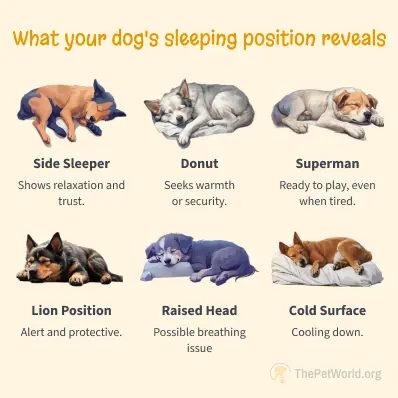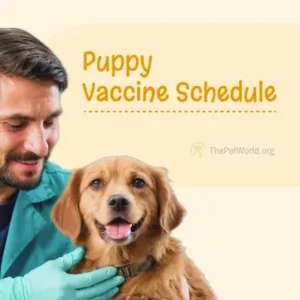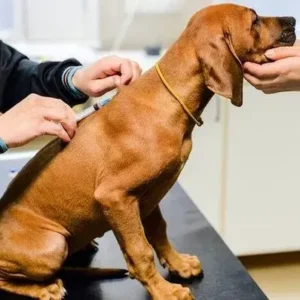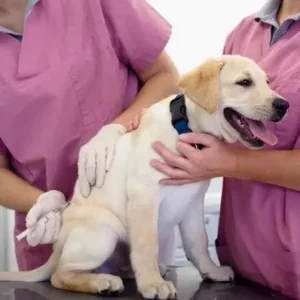Side Sleeper
Dogs like to sleep on their sides with legs outstretched and seem completely at ease and relaxed. This is a very common sleeping position for dogs.
What It Means: This position indicates a deep sense of relaxation. Your dog feels safe in its environment, allowing it to let its guard down and enjoy a peaceful nap.
According to Dr. Jennifer Coates, this position indicates that the dog is comfortable with the temperature and their overall surroundings.
This position allows your dog to stretch and move their paws around comfortably and properly. If your dog is sleeping on either side, it’s also most likely that they are in deep sleep. This is a pretty common dog sleeping position.
The Donut
You may find your new dog curled up in a circular shape, often with the tail covering the nose. In this position, your dog sleeps curled, with its organs tucked in, and there are two common reasons for that:
What It Means: The dog sleeping position donut serves a practical purpose—dogs curl up to conserve body heat and create a protective barrier. This position signals your dog’s need for warmth, security, and a cozy space to rest.
But also this indicates anxiety. If you’ve just brought your new dog home and they’re still getting used to you and the surroundings, you could find them sleeping in the donut pose. This means the dog has not fully developed trust and has its guard up.
The Superman
When your dog is sleeping with its belly down, legs stretched out behind, and front legs extended forward, that’s the Superman position.
What It Means: Typically seen in puppies or highly energetic dogs, the Superman position signifies boundless energy and enthusiasm. This could also mean that your dog is tired but still ready to leap up and engage in a play session at a moment’s notice.
The Lion Position
The Lion’s pose or The Sphinx is similar to a lion’s casual sitting position. In this position, the dogs have their front paws tucked in and their head forward while laying on their bellies.
What It Means: This regal position is a display of readiness and alertness. Your dog is prepared to respond swiftly, showing a protective and vigilant nature.
It’s an instinctual position that harks back to their wild ancestors. This position can mean they are not in deep sleep but, instead, most likely only resting.
Back To Back
Pretty much like the cuddler position, dogs also like to sleep with their back against a person or another pet.
What It Means: The back-to-back position is a gesture of comfort and trust. Your dog relies on the presence of another living being for security, and this position signifies a strong bond.
This dog sleeping position with the owner means they have strong trust in them and rely on them for warmth and security.
The Belly Up
In this cute looking dog sleeping position belly up, dogs like to fully be on their backs and expose their bellies with their paws up in the air.
What It Means: This funny dog sleeping position is the ultimate display of trust and submission. Dogs who sleep belly up feel completely secure in their surroundings and trust their owners implicitly.
Another reason for your dog choosing this position is that they are trying to cool down. Dogs sweat through their paws, so throwing their paws and legs in the air helps cool them down.
According to a professional dog trainer Steffi Trott, senior dogs may be less inclined to sleep in this position due to any back problems or arthritis in particular.
Although this may look like a weird dog sleeping position, it’s not a sign of a lack of trust. Rather, common in adult dogs, they are just trying to avoid putting pressure on their backs.
Raised Head and Neck
In this position, dogs sleep with their head and neck elevated on any surface.
What It Means: This position might be an indication of a breathing problem that is causing your dog to raise its nose. If you find your dog propping its head up to sleep, you should look out for any other symptoms, such as trouble or fast breathing or difficulty in physical activities.
If your dog persistently chooses to sleep in this position and is showing other symptoms as well, you must get them checked by a vet. It’s aslo important to stay on track with your puppy vaccine schedule to protect against serious diseases and ensure your pup’s overall health.














